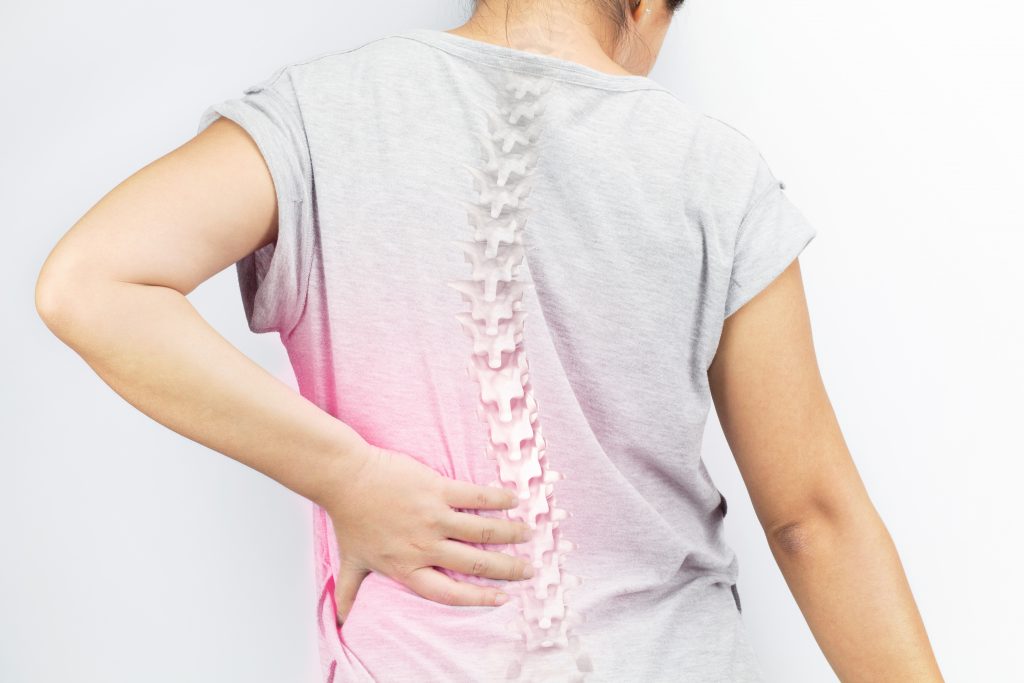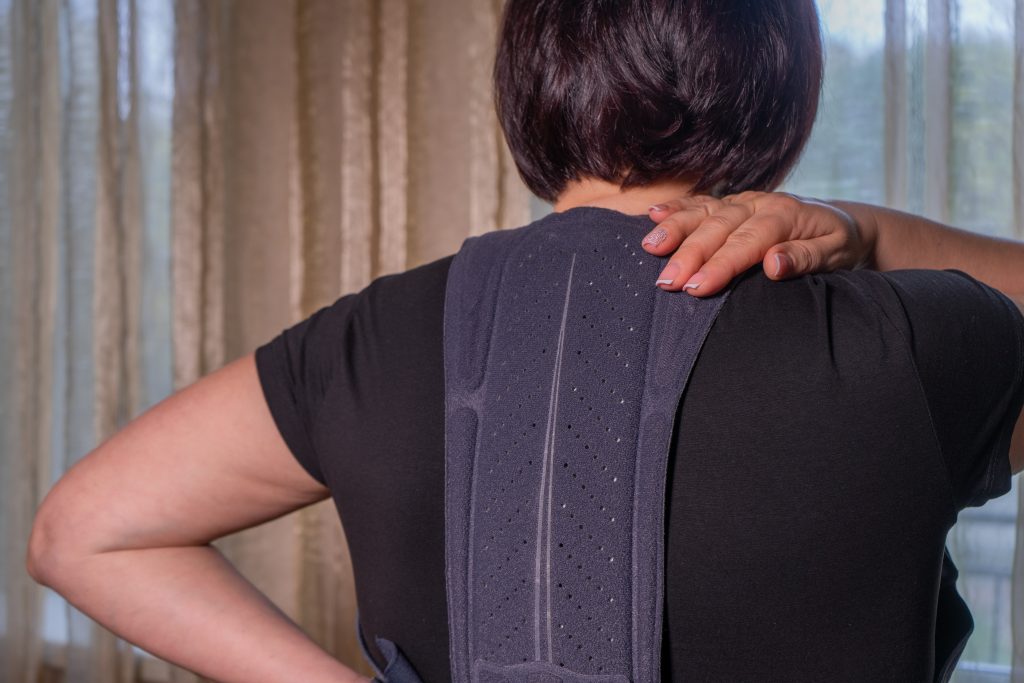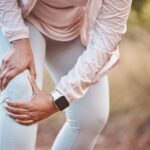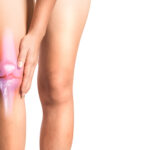July 23, 2021
What To Know About Osteoporosis
Osteoporosis is a common type of bone disease that increases the risk of fractures. This bone condition can affect anyone, though men and women aged 50 years and older tend to be at the highest risk. Knowing what causes osteoporosis can empower you to keep your bones healthy and avoid developing this potentially debilitating condition.
Karen Davidson, NP a family nurse practitioner with Healthcare Associates of Texas says, “Osteoporosis is a condition that makes your bones brittle and weak. This tends to occur after menopause due to a drop in the body’s production of estrogen.”
Continue reading to learn more about the symptoms and causes of osteoporosis and the available treatment options if you are diagnosed with this disease.
What Is Osteoporosis?
Osteoporosis is the most common type of bone disease and occurs when bones become weakened, brittle and fragile enough to easily cause fractures.
There are four main types of osteoporosis: primary, secondary, osteogenesis imperfecta, and idiopathic juvenile osteoporosis.
Primary osteoporosis is the most common type of osteoporosis and affects women more often than men. This type of osteoporosis is usually caused by age-related factors, given how bone density and bone mass gradually decrease with age.
Secondary osteoporosis shares the same symptoms as primary osteoporosis but usually develops as a result of other medical conditions, including leukemia, hyperthyroidism, and hyperparathyroidism. Secondary osteoporosis may also be caused by certain medications that contribute to gradual bone loss, such as corticosteroids and thyroid hormone replacement drugs.
Osteogenesis imperfecta is the rarest type of osteoporosis, in which the bones break down and become susceptible to fractures for no apparent reason. Idiopathic juvenile osteoporosis is also rare and causes bone loss in children between the ages of eight and 14 years.
What Causes Osteoporosis?
Over the course of your life, your body will reabsorb old bone and create new bone. Bone loss generally occurs when your body reabsorbs a higher amount of old bone and is unable to create new bone as quickly or in the amount needed to help you maintain strong, healthy bones.
Certain risk factors can increase your risk of developing osteoporosis. For example, calcium and phosphate are the primary minerals needed to create and maintain strong bones. Therefore, inadequate intake of these minerals through diet or supplementation may increase the risk of osteoporosis.
Davidson says anyone can get osteoporosis but some are at higher risk than others. The top risk factors for osteoporosis are:
- Women
- Caucasian or Asian race
- Thin or small body frames
- Cigarettes smoker and alcohol consumption
- Lack of exercise
- Diet low in calcium
Other osteoporosis risk factors include:
- Being an older adult, bones tend to become weaker with age, and bone loss occurs at a faster rate.
- Having a family history of osteoporosis and fractures
- Having had a malabsorptive weight-loss surgery such as gastric bypass surgery, which inhibits the body’s absorption of nutrients including calcium.
- Hormone imbalances, such as that related to menopause, hormone disorders, and low testosterone
- Poor nutrition, as low amounts of calcium and vitamin D can contribute to frail, weakened bones and bone loss.
- Certain medications, including corticosteroids, proton pump inhibitors, selective serotonin reuptake inhibitors (SSRIs), and anti-seizure medications.
- Certain medical conditions, including endocrine disorders, kidney disease, rheumatoid arthritis, HIV, anorexia nervosa, and gastrointestinal diseases.
- Low physical activity level, as this can lead to the breakdown of bones and poor bone health.
- Heavy, chronic alcohol use, as alcohol can decrease bone density, weaken bones, and deplete nutrients essential for bone health.
What Are Symptoms Of Osteoporosis?
“Osteoporosis typically does not have symptoms. Occasionally we may see someone present with an unusual bone fracture that leads us to the diagnosis of osteoporosis,” Davidson explains.

Many people with early-stage osteoporosis are not aware they have this condition until they suffer a fracture or vertebrae collapse—the latter of which is characterized by severe back pain, loss of height, and hunched or stooped posture.
Osteoporosis symptoms may include:
- Back pain
- Gradual loss of height up to six inches
- Stooped posture (dowager’s hump)
- Fractures that occur easily when falling, bending, or lifting
How Is Osteoporosis Diagnosed?
“Osteoporosis is diagnosed with a painless and fast bone density scan,” says Davidson. Many doctors recommend that women aged 65 years and older be screened regularly for osteoporosis, as well as women of any age who meet risk factors for osteoporosis.
“This is a routine screening that we do during the annual physical or if someone experience an unusual bone fracture,” Davidson adds.
Physical Exam
During the physical exam, your doctor may check for changes in your posture, weight, and height. Your doctor may also evaluate your balance, gait, and muscle strength, and ask you a series of questions about your lifestyle that may indicate an increased risk for osteoporosis. For instance, your doctor may ask you about your diet, physical activity level, and behaviors surrounding nicotine and alcohol use, as well as whether you recently suffered any fractures or have started menopause.
DEXA Test
After your physical exam, your doctor may check your bone mineral density using a dual-energy X-ray absorptiometry (DEXA) test.
A DEXA test is a low radiation X-ray that measures the density of minerals in your bones, particularly that in your spine and hip bones. This test allows your doctor to evaluate the magnitude of your bone loss, diagnose osteoporosis, and predict your risk for future fractures. If you have already been diagnosed with osteoporosis, your doctor may use the DEXA test to determine whether your medications are working to improve your bone health.
The DEXA test is non-invasive, painless, and relatively quick to perform. Your doctor will ask you to lie down on a cushioned table, then pass the DEXA scanner over your body. Your test results will be compared to the bone mineral density in younger individuals with healthy bones to determine whether you have osteoporosis. If you are diagnosed with osteoporosis, your doctor will discuss all your available treatment options, as well as healthy lifestyle changes you can make to improve your bone health and slow bone loss.
How Can Osteoporosis Be Treated?
“There are many different treatments for osteoporosis including pills, injections, or IV infusions. The treatment of choice is dependent on the severity of the osteoporosis. But regardless everyone should take 1200mg of calcium with vitamin D daily for optimal bone health,” Davidson explains.
Furthermore, medications and lifestyle changes are the most common treatments for osteoporosis.
Medications
Medications that have been approved by the FDA for osteoporosis treatment include:
- Bisphosphonates, which may slow bone loss to prevent fractures while also preserving bone strength and density.
- Calcitonin, which is derived from a thyroid hormone and may be used in women who cannot tolerate other osteoporosis medications.
- Estrogen agonists or antagonists, which mimic the effects of estrogen or block the effects of estrogen on tissues to improve bone density and reduce the risk of fractures.
- Hormone replacement therapy, which may involve the use of estrogen and/or progestin to prevent osteoporosis and fractures in women who have gone through menopause.
- Parathyroid hormone analog and parathyroid hormone related-protein analog, which may help increase bone mass in women and men at high risk for suffering fractures.
- RANK ligand inhibitor, which may be used to slow bone loss in subsets of osteoporosis patients, including women who have gone through menopause, men being treated for prostate cancer, and women being treated for breast cancer.
- Sclerostin inhibitor, which blocks the effect of a protein to slow bone loss and help the body form new, healthy bones.
Healthy Lifestyle Changes
Certain lifestyle behaviors can help men and women increase bone mass and bone strength and delay or improve osteoporosis.
Here’s how to treat osteoporosis using healthy lifestyle changes:
- Improve your nutrition, as healthy, whole foods are loaded with vitamins, minerals, and other nutrients that contribute to good bone health. Fruits, vegetables, and proteins are some of the many foods that can improve bone health.
- Increase your intake of foods with calcium and vitamin D, which promote the growth of strong, healthy bones and reduce the risk of fractures. Vitamin D helps the intestine absorb calcium. Good sources of these nutrients include dark leafy greens (bok choy, collard greens, kale), fatty fish (tuna, salmon, mackerel), and eggs.
- Take nutritional supplements for calcium and vitamin D if you are unable to get these nutrients from diet alone.
- Stop smoking and reduce your exposure to secondhand smoke.
- Drink alcohol in moderation and avoid heavy, chronic alcohol use.
- Exercise regularly, as exercise can help strengthen bones, improve balance and coordination, and reduce the risk of fractures. Focus on weight-training exercises that build and increase muscle mass.
- Visit your doctor regularly for routine screenings and checkups that can help identify any risk factors for osteoporosis.
Davidson emphasizes, “If treated early, osteoporosis is reversible.”
Can Osteoporosis Be Prevented?
You can prevent or reduce your risk for osteoporosis by practicing the same healthy lifestyle behaviors outlined above.
“The best way to prevent osteoporosis is to maintain a healthy weight, eat calcium rich foods, avoid smoking and alcohol, and participate in weight bearing exercises.” Davidson says. Stay physically active, eat a healthy, balanced diet, and visit your doctor regularly for osteoporosis screenings if you are a woman aged 65 years or older.
Talk to your doctor about available smoking cessation treatments if you need help quitting. Reduce your alcohol intake to less than one drink a day if you’re a woman, and to less than two drinks a day if you’re a man. Your doctor may also give you other recommendations on alcohol intake based on your current health and medical history.
DISCLAIMER
The information featured in this site is general in nature. The site provides health information designed to complement your personal health management. It does not provide medical advice or health services and is not meant to replace professional advice or imply coverage of specific clinical services or products. The inclusion of links to other web sites does not imply any endorsement of the material on such websites.




